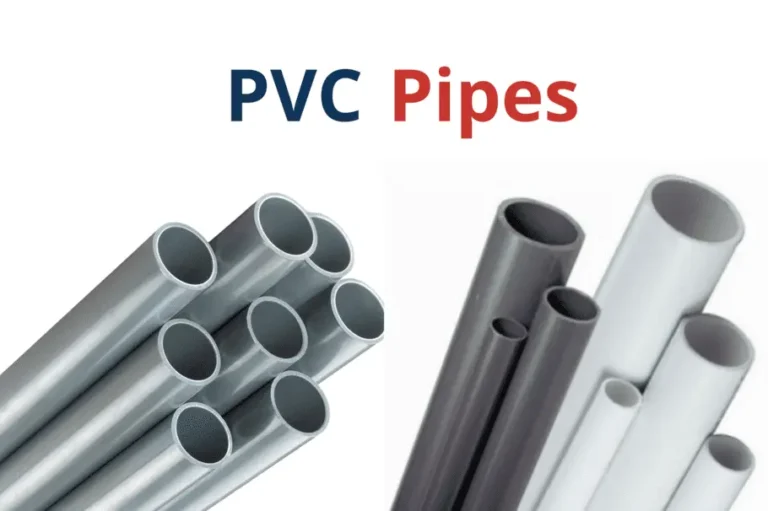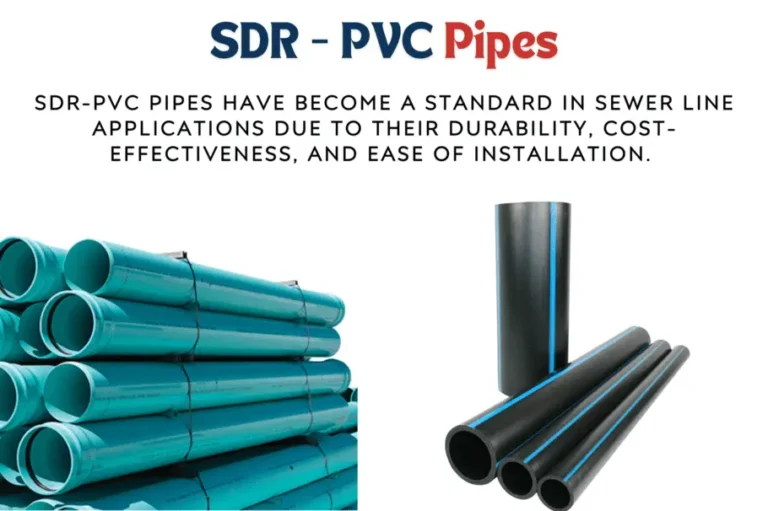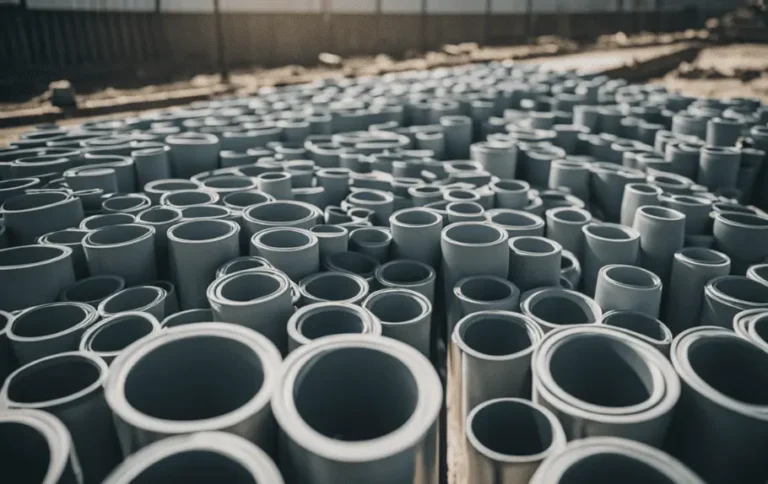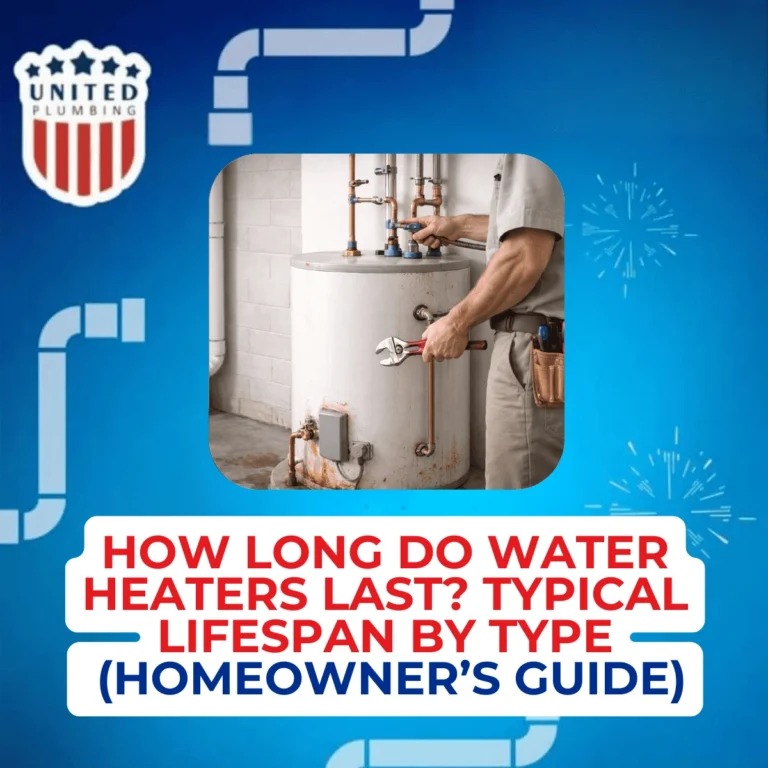FIVE-STAR TEAM WARRANTY &
SAME-DAY SERVICE
All About PVC Pipes Used in Sewage Systems
PVC pipes are commonly used in sewage systems due to their durability, affordability, and versatility. These pipes are made of a type of plastic called polyvinyl chloride, which is known for its strength and resistance to corrosion. PVC pipes have become the preferred choice for sewage systems because they are lightweight, easy to install, and require minimal maintenance.

One of the main advantages of PVC pipes is their resistance to various chemicals and acids commonly found in sewage. This means that they are less likely to corrode or deteriorate over time, which can lead to leaks and other problems. Additionally, PVC pipes are known for their smooth interior surface, which allows for efficient flow of sewage and reduces the risk of blockages.
Overall, PVC pipes have proven to be a reliable and cost-effective solution for sewage systems. With their many benefits and ease of installation, it is no surprise that they have become the go-to choice for many municipalities and wastewater treatment facilities.
PVC Pipes history
PVC (polyvinyl chloride) pipes have a significant history in the development and modernization of sewage systems. Their introduction and widespread adoption represent a major advancement over traditional materials such as clay, orangeburg pipes, and cast iron.
- Early 20th Century: The development of synthetic plastics began in the early 20th century, but it wasn’t until the mid-20th century that PVC started being considered for pipes.
- 1930s-1940s: Initial experimentation with PVC as a pipe material occurred. The material was found to be lightweight, resistant to corrosion, and easy to work with.
- 1950s: Europe, particularly Germany, started using PVC pipes for water distribution and sewage systems. Early adoption in Europe paved the way for broader use.
- 1960s: PVC pipes began to be used in North America for residential plumbing, water distribution, and sewer systems. The development of standards and manufacturing techniques improved the quality and reliability of PVC pipes.
- 1970s: PVC pipes became more widespread in sewage systems due to their cost-effectiveness, ease of installation, and resistance to chemicals and corrosion.
- 1970s-1980s: Technological advancements improved the manufacturing process, leading to stronger and more durable PVC pipes. Standardization bodies, such as the American Society for Testing and Materials (ASTM) and the International Organization for Standardization (ISO), developed standards for PVC pipes, ensuring consistency and reliability.
- 1990s: Further improvements in formulations and production processes enhanced the performance of PVC pipes, making them suitable for a broader range of applications, including high-pressure systems.
- 2000s-Present: PVC pipes are now a standard material for sewage systems worldwide. They are valued for their long lifespan, which can exceed 100 years, resistance to root intrusion, and ability to withstand a wide range of chemicals found in sewage.
Understanding SDR
Standard Dimension Ratio (SDR) is a critical concept in the specification and use of PVC pipes, especially for sewer lines. SDR is a method of rating a pipe’s durability and performance by correlating the pipe’s wall thickness to its diameter. This ratio helps determine the pressure rating and structural integrity of the pipe under various conditions.

Common SDR Values for Sewer Lines
For sewer lines, SDR values commonly used range from SDR 26 to SDR 35, but other SDR values can be used depending on the specific requirements of the project. These values are chosen based on factors like the depth of burial, soil conditions, and expected loads.
- SDR 26: Thicker walls, suitable for deeper burial and higher load conditions.
- SDR 35: Thinner walls compared to SDR 26, suitable for standard municipal sewer applications with moderate depth and load conditions.
Advantages of SDR-PVC Pipes in Sewer Lines
- Consistent Performance: SDR ensures consistent wall thickness proportional to the diameter, providing reliable performance under various pressures and loads.
- Corrosion Resistance: PVC is inherently resistant to corrosion, ensuring a long lifespan in sewer applications.
- Lightweight and Ease of Installation: PVC pipes are lighter than traditional materials like cast iron or concrete, reducing transportation and installation costs.
- Smooth Interior: The smooth interior surface reduces friction, improving flow capacity and reducing the likelihood of blockages.
- Flexibility: PVC pipes offer some degree of flexibility, allowing them to withstand minor ground movements without cracking.
Overview of PVC Pipes in Sewage Systems
Composition and Properties of PVC
Polyvinyl Chloride (PVC) pipes are made from a thermoplastic material that is composed of 57% chlorine and 43% carbon. PVC is a durable and lightweight material that is resistant to corrosion, chemicals, and UV radiation. PVC pipes are manufactured in a variety of sizes and shapes, including solid wall, cellular core, and perforated pipes.
Advantages of Using PVC in Sewage
PVC pipes have several advantages over other materials in sewage systems. They are easy to install, require low maintenance, and have a long service life. PVC pipes are also resistant to abrasion, impact, and root intrusion. Additionally, PVC pipes have a smooth interior surface that reduces friction and prevents clogging, which improves the flow of sewage.
Common Sizes and Shapes
PVC pipes are available in a range of sizes and shapes that are suitable for various applications in sewage systems. The most common sizes for PVC pipes used in sewage systems are 4 inches, 6 inches, and 8 inches in diameter. The most common shapes include solid wall pipes, cellular core pipes, and perforated pipes. Solid wall pipes are used for gravity sewer systems, while cellular core pipes are used for force mains and pressure sewer systems. Perforated pipes are used for subsurface drainage and leach fields.
In summary, PVC pipes are a popular choice for sewage systems due to their durability, resistance to corrosion and chemicals, ease of installation, and low maintenance requirements. With a range of sizes and shapes available, PVC pipes can be used in various applications in sewage systems.
Installation and Maintenance

Installation Techniques
PVC pipes are easy to install and are a popular choice for sewage systems. The installation process involves cutting the pipes to the desired length, joining them together with fittings, and securing them in place. PVC pipes can be installed above or below ground, depending on the needs of the system.
One of the advantages of PVC pipes is their flexibility, which makes them easy to work with and bend around corners. However, it is important to ensure that the pipes are properly supported to prevent sagging and damage over time.
Longevity and Durability
PVC pipes are known for their durability and longevity, making them a reliable choice for sewage systems. They are resistant to corrosion, chemicals, and UV radiation, which can cause damage to other types of pipes.
PVC pipes can last for decades with proper installation and maintenance. They are also resistant to cracking and breaking, which can be a common issue with other types of pipes.
Maintenance Requirements
PVC pipes require minimal maintenance, making them a low-maintenance option for sewage systems. Regular inspections are recommended to check for any signs of damage or wear and tear.
In the event of a blockage or clog, PVC pipes can be easily cleared using a plumber’s snake or other similar tools. It is important to avoid using harsh chemicals or abrasive materials, as these can cause damage to the pipes.
Overall, PVC pipes are a reliable and durable choice for sewage systems, with minimal maintenance requirements and easy installation techniques.
Post views: 798
Latest posts

How Long Do Water Heaters Last? Typical Lifespan by Type (Homeowner’s Guide)
Your water heater works quietly behind the scenes every single day until one day it doesn’t. One of the most common...

Electrical Panel Upgrade California: Costs, Safety & When You Need One
An electrical panel upgrade in California is one of the most important safety and performance improvements a...


If you still have questions or need advice, please leave a request and we will contact you as soon as possible
Need a plumber and got no clue where to start?
(408) 539-6936Facing a plumbing issue? Get a FREE in-person estimate and quick solutions from our skilled technicians, ensuring your home runs smoothly again!
